-

316L stainless steel plate, 316L stainless steel coil
The corrosion resistance, and high temperature strength of 316 stainless steel have been greatly improved due to the addition of Mo element. The high temperature resistance can reach 1200-1300 degrees and can be used under harsh conditions.
Uses: seawater equipment, chemical, dye, papermaking, oxalic acid, fertilizer and other production equipment; Photography, food industry, coastal facilities, ropes, CD rods, bolts, nuts.
-
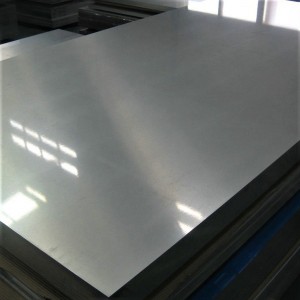
304 stainless steel plate 304 stainless steel coil plate
Stainless steel plate surface smooth, with high plasticity, toughness and mechanical strength, acid, alkaline gas, solution and other media corrosion. It is an alloy steel that does not rust easily, but it is not absolutely stainless.
-
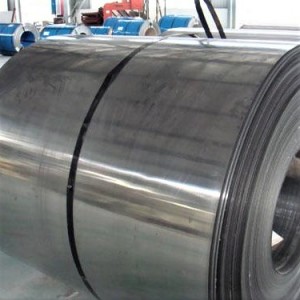
304L stainless steel plate, 304L stainless steel coil
304L is a universal stainless steel, which is widely used to make equipment and parts requiring good comprehensive performance (corrosion resistance and formability
-
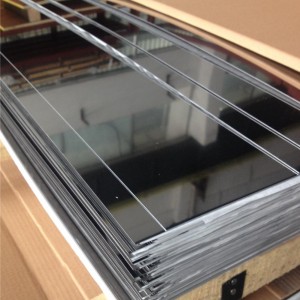
303 stainless steel plate 303 stainless steel coil plate
The Surface finish 303 is a free cutting stainless steel containing sulfur and selenium, respectively, for applications where free cutting is primarily required and Surface finish is high. 303 stainless steel improves cutting performance and high temperature bond resistance. Most suitable for automatic lathes, bolts and nuts. -
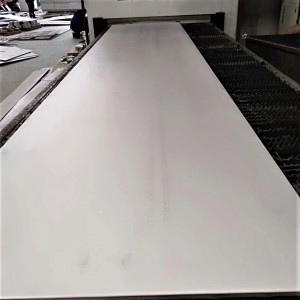
201 Stainless Steel Plate 201 stainless steel coil plate
201 stainless steel with, polishing no bubbles, no pinhole and other characteristics, is the production of various cases, watchband bottom cover high-quality materials.
-
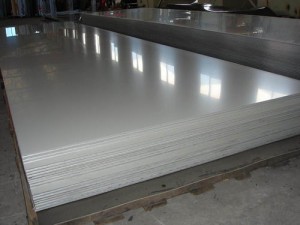
S630 stainless steel plate
Stainless steel plate has smooth surface, high plasticity, toughness and mechanical strength, and is resistant to corrosion of acid, alkaline gas, solution and other media. It is a kind of alloy steel that is not easy to rust, but it is not absolutely rust free. Stainless steel plate refers to the steel plate resistant to the corrosion of weak media such as atmosphere, steam and water, while acid resistant steel plate refers to the steel plate resistant to the corrosion of chemical etching media such as acid, alkali and salt. Stainless steel plate has a history of more than one century since it came out in the early 20th century.
-
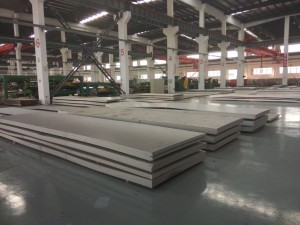
430 stainless steel plate 430 stainless steel coil
Stainless steel plate has smooth surface, high plasticity, toughness and mechanical strength, and is resistant to corrosion of acid, alkaline gas, solution and other media. It is a kind of alloy steel that is not easy to rust, but it is not absolutely rust free. Stainless steel plate refers to the steel plate resistant to the corrosion of weak media such as atmosphere, steam and water, while acid resistant steel plate refers to the steel plate resistant to the corrosion of chemical etching media such as acid, alkali and salt. Stainless steel plate has a history of more than one century since it came out in the early 20th century.
-
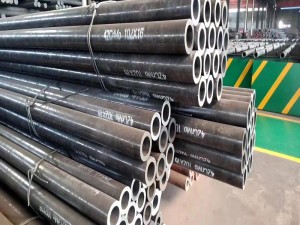
42crmo Seamless steel pipe
Production specification:
Outer diameter of steel pipe 20-426
Steel pipe wall thickness of 20-426
Product introduction:
The purpose of 42crmo seamless steel pipe: the special steel for bridge is “42crmo”, the special steel for automobile girder is “42CRmo”, the special steel for pressure vessel is “42Crmo”. This kind of steel is to rely on the adjustment of carbon (C) content to improve the mechanical properties of steel, therefore, according to the carbon content of high and low, this kind of steel can be divided into: low carbon steel – carbon content is generally less than 0.25%, such as 10, 20 steel, etc.; Medium carbon steel – carbon content is generally between 0.25 ~ 0.60%, such as 35, 45 steel, etc. High carbon steel – carbon content generally greater than 0.60%. Such steel is not normally used to make steel pipes.
Process specification:
Hot working specification
Heating temperature 1150 ~1200°C, starting temperature 1130 ~1180°C, end temperature > 850°C,φ> 50mm, slow cooling.
Normalizing specification
Normalizing temperature 850~900°C, out of the oven air cold.
High temperature tempering specification
Tempering temperature 680~700°C, out of the oven air cold.
Specification for quenching and tempering
Preheating temperature 680 ~700°C, quenching temperature 840~880°C, oil cooling, tempering temperature 580°C, water cooling or oil cooling, hardness ≤217HBW.
Specification for hardening and toughening under – temperature quenching
Quenching temperature 900°C, tempering temperature 560°C, hardness (37±1) HRC
Specification for induction hardening and tempering
Quenching temperature 900°C, tempering temperature 150~180°C, hardness 54 ~60HRC.
-

45# Seamless Steel pipe
Production specification:
Outer diameter of steel pipe 20-426
Steel pipe wall thickness of 20-426
Product introduction:
The raw material of rolling seamless tube is round tube billet, round tube embryo is cut and processed by cutting machine with the growth of about 1 meter blank, and sent to the furnace by conveyor belt heating. The billet is fed into a furnace and heated to about 1200 degrees Celsius. The fuel is hydrogen or acetylene. The temperature control in the furnace is the key problem. After the round tube billet comes out, it is perforated by the pressure punch. Generally, the most common perforator is the conical roll perforator. This kind of perforator has high production efficiency, good product quality, large perforating diameter and can wear a variety of steel. After perforation, the round tube billet is successively rolled by three high diagonal, continuous rolling or extrusion. After extrusion, the pipe should be removed for sizing. The caliper rotates into the steel embryo through a conical drill at high speed to punch holes and form steel pipes. The inner diameter of the steel pipe is determined by the outer diameter length of the caliper drill bit. After sizing the steel pipe, it enters the cooling tower and is cooled by spraying water. After cooling the steel pipe, it will be straightened. After straightening, the steel pipe is sent by conveyor belt to the metal inspection machine (or hydraulic test) for internal inspection. If there are cracks, bubbles and other problems inside the steel pipe, it will be detected. Steel pipe quality inspection after the strict hand selection. After the steel pipe is inspected, the number, specification and production lot number are sprayed with paint. And by the crane into the warehouse.
-
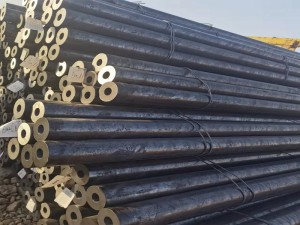
40cr seamless steel pipe
Production specification:
Outer diameter of steel pipe 20-426
Steel pipe wall thickness of 20-426
Steel pipe standard:
According to standard GB/T 3077-2008: chemical composition (mass fraction, %) C 0.37~0.44, Si 0.17~0.37, Mn 0.50~0.80, Cr0.80~1.10, Ni≤0.30. 【 Mechanical properties 】
Sample blank size (mm) : 25
Heat treatment:
First quenching heating temperature (℃) : 850; Coolant: Oil
Second quenching heating temperature (℃) : -
Tempering heating temperature (℃) : 520; Coolant: water, oil
Tensile strength (σb/MPa) : ≧980
Yield point (σs/MPa) : ≧785
Elongation after breaking (δ5/%) : ≧9
Reduction rate of cross-section (ψ/%) : ≧45
Impact absorption work (Aku2/J) : ≧47
Brinell hardness (HBS100/3000) (annealing or high-temperature tempering condition) : ≦207
-
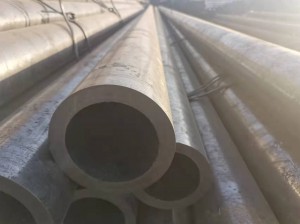
20# Seamless steel pipe
Production specification:
Outer diameter of steel pipe 20-426
Steel pipe wall thickness of 20-426
20# seamless steel pipe is made of 20# steel, with slightly higher strength than 15#, rarely quenched and no tempering brittleness. Cold deformation plasticity is high, generally for bending, calendering, bending and hammer arch processing, welding performance of arc welding and contact welding is good, gas welding thickness is small, the shape of strict requirements or complex shape of the workpiece is easy to crack. Machinability cold drawing or normalizing state is better than annealing state, generally used to manufacture less stress and high toughness requirements of the workpiece.
The material of 20# seamless steel pipe is: high quality carbon structural steel
Brand number: 20#
Standard: GB8162-2018
GB/T8163-2018
GB3087-2008
GB9948-2013
GB5310-2017
-

Stainless steel decorative steel pipe
Stainless steel decorative pipe is also called stainless steel welded steel pipe, which is called welded pipe for short. Usually, steel or steel strip is welded into steel pipe after being crimped and formed by the unit and mold. The production process of welded steel pipe is simple, the production efficiency is high, there are many varieties and specifications, and the equipment cost is small, but the general strength is lower than that of seamless steel pipe.
There are many kinds of stainless steel pipes, but they are mainly used for the following purposes:
1、 Classification of stainless steel pipes
1. Classification by production method:
(1) Seamless pipe – cold drawn pipe, extruded pipe, cold rolled pipe.
(2) Welded pipe:
(a) According to process classification – gas shielded welding pipe, arc welding pipe, resistance welding pipe (high frequency, low frequency).
(b) It is divided into straight welded pipe and spiral welded pipe according to the weld.
2. Classification according to section shape: (1) round steel pipe; (2) Rectangular tube.
3. Classification by wall thickness – thin wall steel pipe, thick wall steel pipe
4. Classified by use: (1) Civil pipes are divided into round pipes, rectangular pipes and flower pipes, which are generally used for decoration, construction, structure, etc;
(2) Industrial pipe: steel pipe for industrial piping, steel pipe for general piping (drinking water pipe), mechanical structure/fluid delivery pipe, boiler heat exchange pipe, food sanitation pipe, etc. It is generally used in various fields of industry, such as petrochemical, paper, nuclear energy, food, beverage, medicine and other industries with high requirements for fluid medium.
2、 Seamless steel pipe
Stainless steel seamless pipe is a kind of long steel with hollow section and no joints around.
1. Manufacturing process and flow of seamless steel pipe:
Smelting>ingot>steel rolling>sawing>peeling>piercing>annealing>pickling>ash loading>cold drawing>head cutting>pickling>warehousing
2. Features of seamless steel pipe:
It is not difficult to see from the above process flow: first, the thicker the wall thickness of the product, the more economical and practical it will be. The thinner the wall thickness, the higher the processing cost will be; Secondly, the process of the product determines its limitations. Generally, the precision of seamless steel pipe is low: uneven wall thickness, low brightness of the surface inside and outside the pipe, high sizing cost, and there are pits and black spots on the surface inside and outside the pipe, which are difficult to remove; Third, its detection and shaping must be processed offline. Therefore, it has its advantages in high pressure, high strength and mechanical structure materials.
3、 Welded steel pipe
304 stainless steel decorative tube
304 stainless steel decorative tube
Welded steel pipe, referred to as welded pipe for short, is a stainless steel pipe welded from steel plate or steel strip after being crimped and formed by the machine set and mold.
1. Steel plate>Splitting>Forming>Fusion welding>Induction bright heat treatment>Internal and external weld bead treatment>Shaping>Sizing>Eddy current testing>Laser diameter measurement>Pickling>Warehousing
2. Features of welded steel pipe:
It is not difficult to see from the above process flow: first, the product is produced continuously and online. The thicker the wall thickness, the greater the investment in the unit and welding equipment, and the less economical and practical it is. The thinner the wall, the lower its input-output ratio will be; Secondly, the process of the product determines its advantages and disadvantages. Generally, the welded steel pipe has high precision, uniform wall thickness, high internal and external surface brightness of stainless steel pipe fittings (the steel pipe surface brightness determined by the surface grade of the steel plate), and can be arbitrarily sized. Therefore, it embodies its economy and beauty in the application of high-precision, medium-low pressure fluid.
There is chlorine ion in the use environment. Chlorine ions exist widely, such as salt, sweat, sea water, sea breeze, soil, etc. Stainless steel corrodes rapidly in the presence of chloride ions, even surpassing ordinary low-carbon steel. Therefore, there are requirements for the use environment of stainless steel, and it is necessary to wipe it regularly to remove dust and keep it clean and dry.
316 and 317 stainless steels (see below for the properties of 317 stainless steels) are molybdenum containing stainless steels. The molybdenum content in 317 stainless steel is slightly higher than that in 316 stainless steel. Because of the molybdenum in the steel, the overall performance of this steel is better than 310 and 304 stainless steel. Under high temperature conditions, when the concentration of sulfuric acid is lower than 15% and higher than 85%, 316 stainless steel has a wide range of uses. 316 stainless steel also has good chloride corrosion resistance, so it is usually used in marine environment. With the development of social economy, the application of stainless steel pipe has also been more and more popular. It will bring new changes in all fields.